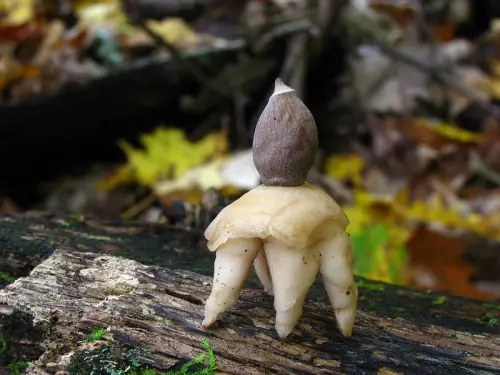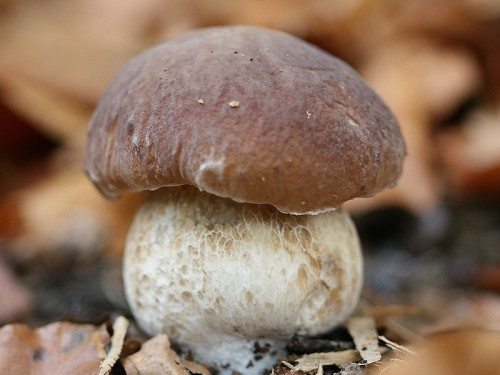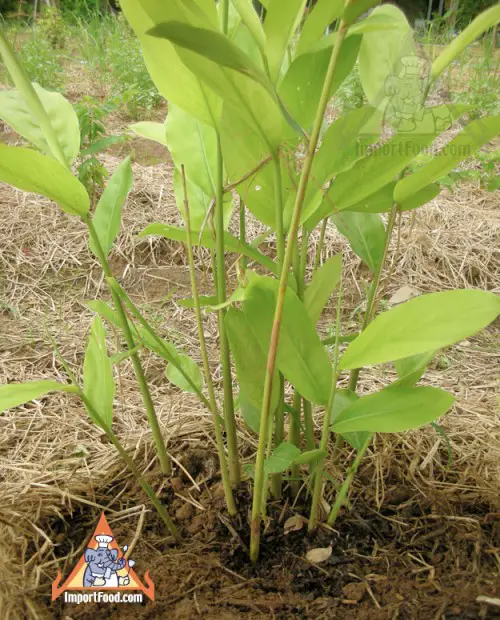Four-footed Earthstar
An unusual and inedible mushrooms species is the Four-footed Earthstar. It is also known as the rayed earthstar or earthstar fungi. It was first scientifically described in 1794 by Christian Hendrik Persoon. This mushroom is an uncommon cosmopolitan mushroom species which can be found in Australasia, Asia, Africa, the Americas, and Europe.
The Four-footed Earthstar is a small and tough fruit body which has grey-brown balls that are initially closed up by a skin made up of 4 distinctive tissue layers. The outer tissue layer will split to form star-like rays and expose the circular spore case. Inside this spore case is the gleba, which is a fertil spore-producing tissue that is white and firm when it young, but becomes powdery and brown when it ages. The grey-brown spore case is on a slender stalk.
When this mushroom has become fully expanded, the fruit body reaches up to 2 to 3 cm wide and 3 cm tall. Its outer skin is then purplish-brown and has 4 or 5 yellow-brownish or cream coloured rays that have their tips in the substrate. Between the tips are interwoven mycelia.
Like other earthstar fungi species, the Four-footed Earthstar will spend most of its life cycle as thin strands. It gets its nutrients by decomposing leaf letter and then converting it to humus and then mieralise organic matter into the soil. The Four-footed Earthstar can be found in coniferous woodlands during the summer and autumn. In Britain, all of its colonies have been found in beech forests that are on calcareous soil, and in Mexico it is only found in thorn forest and pine-oak forests during the summer.





